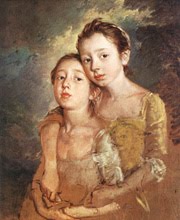When I was an illustrator by necessity, it was easy to get rid of them. I knew that they were products that I would have had little reason to do them except to get paid.
John Berger in his 1972 "Ways of Seeing" BBC Television series and accompanying book discusses art through the millenia as product. Product for the ruling class. Even the decorations in the churches were paid for by nobles to ensure their place in a glitzy afterlife. Berger, an English writer is someone I wish I had been aware of in 1972. We had Hilton Kramer and sticky fingered critics ( artists gave them freebies as tribute for good reviews) like Henry Geldzahler and Clement Greenberg. A good read about these "critics" is in the latest Robert Hughes book "The Spectacle of Skill. http://www.nytimes.com/2015/12/04/books/review-in-robert-hughess-the-spectacle-of-skill-an-aesthetes-unsparing-eye.html
John Berger posits that painting as we know it in the west started in earnest around 1400 and ended 1900. I have to say I agree with him except for a few rare exemplars.
His thesis is that much art as it has been practiced in the west is the art of capitalism, the art of possession including depictions of women and the objects of still-lifes. I was particularly affected, devastated actually, when he explored nude or 'naked' painting, as I paint them and wondered if I was complicit in making women simply as objects for men, Many nudes of women were made to display a rich nobleman's or a king's "possession" a beautiful women to envious onlookers. She was bought, it never ends. Donald Trump had a picture taken of his current wife Melania in a bikini on a mock-up of the oval office sprawled on a rug and she posed nude on fur in his private jet.
 |
| Melania Trump |
"But the essential way of seeing women, the essential use to which their images are put, has not changed. Women are depicted in a quite different way from men-not because the feminine is different from the masculine-but because the 'ideal' spectator is always assumed to be male and the image of the woman is designed to flatter him. If you have any doubt that it is so, make the following experiment. Choose from this book an image of a traditional nude.Transform the Woman into a man. Either in your minds eye or by drawing on a reproduction. Then notice the violence the transformation does. Not to the image but to the assumptions of a likely viewer."
The Bouguereau Nymphs and Gerome's "Slave Market" are my own additions.
 |
| Agnolo Bronzino 1545 Venus, Cupid, Folly and Time oil on wood panel 57" x 46" |
 |
| Jean-Leon Gerome "The Slave Market" I particularly dislike the leaden Gerome and his faux history paintings, baths and slave markets- cheap thrills for the neo-pious Victorian men. Charlotte Bronte in her book "Villette" has a wonderful chapter on just this subject. In this post on my blog I have printed out a chapter referencing an art exhibition. http://sharonknettell.blogspot.com/2015/10/charlotte-bronte-reviews-art-exhibition.html |
 |
| Bouguereau "Les Nymphs" |
 |
| 'Helene Fourment in a Fur Robe "Rubens |
 |
| "Danae" Rembrandt |
John Berger; "Almost all post-Renaissance European sexual imagery is frontal- either literally or metaphorically- because the sexual protaganist is the spectator owner looking in at it. The absurdity of this male flattery reached its peak in the academic art of the nineteenth century.
 |
| Bouguereau "Les Oreades" Imagine a flying flock of naked men! |
I love painting the figure, the naked, the nude. A naked figure has an erotic charge. It is what essentially makes the birds,birds and the bees,bees.
When I was younger I never questioned the validity of painting, of being an artist or my painting choices. Judith Fairly, a writer from Texas sent me a delightful short story from the January 18th issue of The New Yorker, "The Story of a Painter" by Ludmilla Petrushevskaya. It is about a very, very, poor painter, destitute and homeless.His only wish is to find something to scratch a picture on the pavement. All his art supplies have been lost. It occurred to me that, that is it exactly, scratching something out is how I speak.
The book referenced on this post;
http://www.amazon.com/Ways-Seeing-Based-Television-Series/dp/0140135154
Further reading on John Berger.
Reviews of his latest book; http://www.amazon.com/Portraits-John-Berger-Artists-ebook/dp/B0162HIV4G/ref=cm_cr_pr_product_top?ie=UTF8
http://www.nytimes.com/2015/12/06/books/review/portraits-john-berger-on-artists.html
https://newrepublic.com/article/126679/many-faces-john-berger
Many,many thanks to Ian Warburton for enlightening me about this wonderful writer.












No comments:
Post a Comment